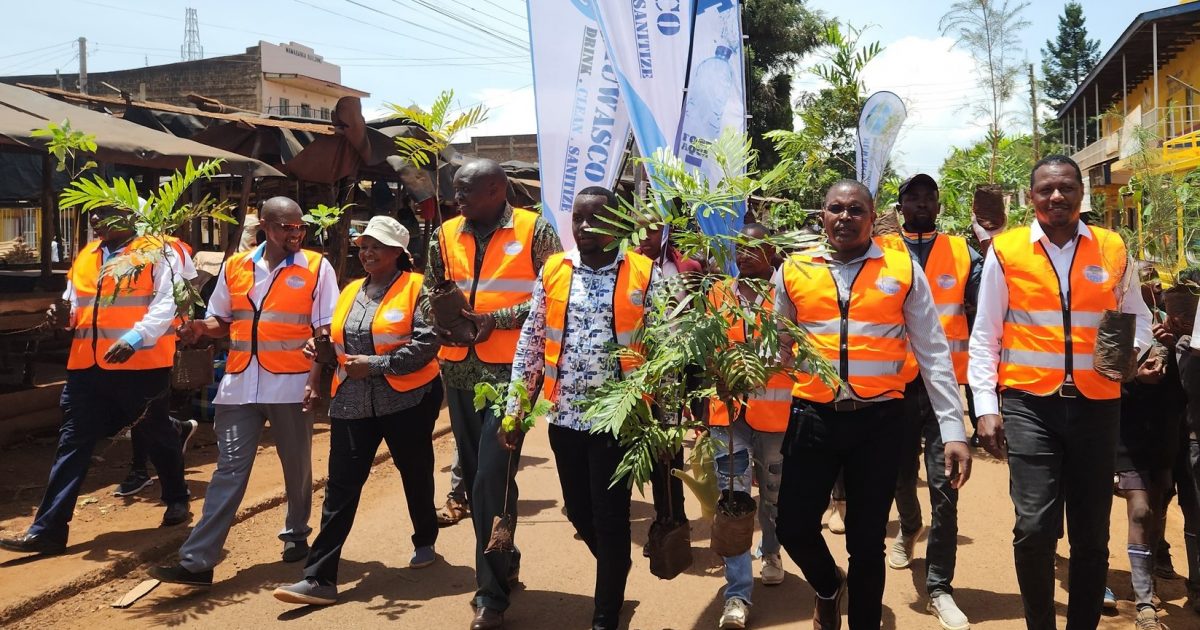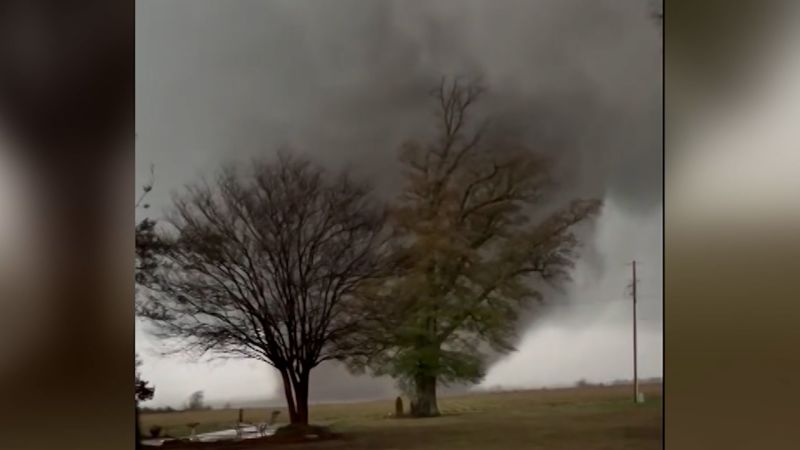
INDIANAPOLIS — This is a compilation of some, but not all , of the most infamous tornado days on record in Indiana. It should be noted that tornado record-keeping prior to 1950 is not very good. This list is in chronological order from oldest to latest.
"At 4:00 p.m. on March 18, 1925, a tornado arrived in Indiana after devastating parts of Missouri and Illinois.

The town of Griffin was destroyed; the Owensville area and Princeton suffered heavy losses. Hundreds were injured; 76 were killed. Within hours, help came from nearby towns, the American Red Cross , and the Indiana National Guard .
" - from a historical plaque in Griffin, Indiana (Posey County) and one of the hardest hit in Indiana on that fateful day. It was a highly destructive, long-track tornado that impacted parts of Missouri, Illinois and Indiana, earning its name from the fact that it passed through these three states. Here are some key details: Track Length : The tornado's path was approximately 219 miles long, making it the longest continuous tornado path ever recorded in the U.
S. It began near the town of Ellington, Missouri, around 1:01 p.m.
and ended just northeast of Princeton, Indiana, around 4:30 p.m. Duration : It lasted for about 3.
5 hours , a remarkable duration for a tornado. Speed : average forward speed of nearly 62 mph Width : The tornado's width varied but was estimated to be as wide as 1 mile at its peak. The tornado struck in the early afternoon, causing widespread damage, particularly in the towns of Murphysboro, Illinois , and West Frankfort, Illinois .
It moved through rural areas, as well as larger towns and cities, causing heavy destruction. Casualties : It is believed to have killed 695 people and injured over 2,000 . This makes it the deadliest tornado in U.
S. history. Damage : Thousands of buildings were either destroyed or heavily damaged.
Entire communities were wiped out, leaving behind widespread devastation. Injuries : The injuries were numerous, with many people suffering severe trauma due to the strength of the storm and flying debris. The tornado occurred during a period of intense spring storms in the region.
The National Weather Service did not issue tornado warnings at the time, which contributed to the high death toll. The tornado itself would have likely been labeled as an F5 on the Fujita scale (meaning it was "incredible" in its strength, with winds in the 261- 316 mph range), but the scale wasn't introduced until 1971 . National Weather Service event: On March 15, 2025, the NWS Paducah office hosted a 100-year anniversary commemoration at Murphysboro High School in Illinois, featuring talks and activities to honor the event's legacy .
The Palm Sunday Tornado Outbreak occurred on April 11, 1965 , and is one of the most significant and deadly tornado events in U.S. history.
It left a lasting impact on the United States, particularly on regions like Indiana, and had major implications for the development and improvement of the severe weather warning system. Scale of the outbreak: The outbreak spanned across several states, including Indiana , Illinois , Iowa , Ohio , Missouri , Kentucky and Michigan , and was characterized by a series of violent tornadoes, some of which were classified as F4 or F5 on the Fujita scale (which later evolved into the EF scale). Casualties: The event resulted in at least 271 deaths and over 1,500 injuries across the affected states.
Destruction: The tornadoes caused widespread destruction, with entire towns being flattened. The Palm Sunday Outbreak is particularly known for its high concentration of violent tornadoes. It produced 47 tornadoes in a 24-hour period, including seven F4 and F5 tornadoes.
Several of these tornadoes traveled significant distances, destroying homes, schools and businesses along the way. Indiana was one of the hardest-hit states during the Palm Sunday Outbreak with a total of 10 tornadoes . These were all significant tornadoes with 8 of the 10 twisters in the state being F4 and the other two F3 (this was nearly 40 years before the Enhanced Fujita scale was implemented).
"In Indiana, 137 people were killed and over 1,200 injured by 10 tornadoes during the late afternoon and evening hours that day. One of the most violent tornadoes occurred at Midway Trailer Court near Goshen. A second tornado struck minutes later near Goshen at Rainbow Lake.
Another tornado formed just south of South Bend and tracked to just south of Elkhart. This tornado killed 45 in the town of Dunlap, and 33 of those killed were at a trailer park. Other Northern Indiana locations hit by tornadoes included Lapaz, Koontz Lake, Wyatt, Wakarusa and Wanatah.
" - via NWS Indianapolis The "Twin Tornadoes" of Dunlap are a haunting image of the event captured by then-Elkhart Truth photographer Paul Huffman. Many of the supercells exhibited long-track tornadoes and/or dual mesocyclones due to extreme wind shear that slowed their typical "cyclic" nature. The Palm Sunday Tornado Outbreak was a watershed moment in the history of tornado forecasting and warning systems in the United States.
Though the outbreak was well forecast, many didn't get the warnings mainly due to either being outside for the holiday, losing electricity/no communication from multiple storms hitting the same communities or simply not having time to seek safety due to the 60-70mph storm speed in this rare meteorological setup, highlighting critical gaps in weather prediction and public response. Need for improved warning systems: At the time, tornado warnings were issued only on a county-by-county basis, and they were typically based on reports from the public or spotters. The outbreak revealed that these warning systems were insufficient for providing enough advance notice, especially for rapidly developing or large tornadoes.
Communication was also a challenge. Many people did not receive warnings in time to seek shelter or evacuate, leading to higher casualties. Tornado forecasting: The Palm Sunday Outbreak showed the need for a more sophisticated forecasting system .
At the time, weather forecasting relied largely on weather observation and public reports , and the technology for predicting tornadoes was still in its infancy. Tornadoes were often not detected until after they had formed, meaning that people didn’t have adequate time to take cover. It underscored the need for better technology , like radar systems capable of detecting severe weather patterns that could lead to tornado formation.
Development of the modern warning system: Following the Palm Sunday Outbreak, there was a growing push for the development of more effective severe weather warnings . This led to the establishment of the National Weather Service's Storm Prediction Center (SPC) and improvements in tornado forecasting and public alert systems. Radar technology saw a major boost after the event.
The introduction of Doppler radar in the 1980s revolutionized weather forecasting and tornado warning systems. This technology could detect rotation in storms, helping meteorologists issue more accurate and timely warnings. The Palm Sunday event also highlighted the need for a national Emergency Alert System (EAS) , which would allow for faster dissemination of weather warnings via television, radio, and later, digital platforms.
Public awareness and safety education: The outbreak also led to an increased focus on educating the public about tornado preparedness. More emphasis was placed on the importance of storm shelters , basement safety and emergency plans for families in tornado-prone areas. In addition, the tragic loss of life spurred the push for tornado sirens and the adoption of more comprehensive community preparedness programs .
The Palm Sunday Tornado Outbreak had far-reaching effects, not only on tornado warning systems but also on emergency management practices across the United States. It contributed to the development of more effective forecasting tools and the eventual modernization of tornado warning and response protocols. It also served as a sobering reminder of the destructive potential of severe weather and the importance of being prepared for such events.
Today, the United States has one of the most advanced severe weather warning systems in the world, thanks in part to the lessons learned from events like the Palm Sunday Tornado Outbreak. The April 3-4, 1974 Super Tornado Outbreak was one of the most devastating and wide-ranging tornado events in U.S.
history. It involved a total of 148 tornadoes across 13 states in the U.S.
Midwest and South, and it left a lasting impact on both the affected areas and the field of meteorology. Widespread destruction : The outbreak spanned from Indiana and Ohio in the north to Alabama and Georgia in the south. The tornadoes caused extensive damage in major cities like Xenia, Ohio , and Louisville, Kentucky .
The outbreak occurred in a period of about 18 hours , during which time the tornadoes wreaked havoc in communities across this vast area. Fatalities and injuries : A total of 335 people were killed, and over 5,000 were injured . The destruction was severe, with thousands of homes, businesses and schools destroyed, leaving many people homeless.
Significant tornadoes : One of the most infamous tornadoes of the outbreak was the Xenia, Ohio tornado , an F5 tornado that completely devastated the city, killing 33 people. The outbreak featured a record number of F5 tornadoes for a single event— seven in total, which is rare in tornado history. To put that into perspective, since 1950, the U.
S. averages approximately one EF5 tornado every five years . The 1974 Super Outbreak produced seven in less than 24 hours ! Meteorological legacy : The outbreak is often cited as a turning point in how meteorologists view tornado forecasting and warning systems.
It highlighted the need for better tracking and warning of tornadoes, especially in high-risk regions. It also proved meteorological theories of the late, great mind of Dr. Theodore Fuijta (meteorologist that produced the F-Scale to rate to tornado damage).
Prior to April 3, 1974, one of Fujita's theories was that stronger, violent tornadoes consisted of " mesovortices " that rotated around the main rotating column of air. Mick Deckman's photographs of the Parker City, Indiana tornado that day captured multiple vortices in that violent F4 tornado. It also disproved some meteorological "myths" like tornadoes can't cross water, can't climb terrain and that tornadoes' low pressure doesn't cause "buildings to explode.
" Indiana was heavily affected by the Super Tornado Outbreak, experiencing a significant number of tornadoes that caused widespread damage. Tornado activity : Indiana saw 21 tornadoes across 47 counties This included a number of strong and violent tornadoes (rated F4 and F5), including an F5 in southern Indiana from just north of Tell City to New Pekin, six F4s and four F3s . Major destruction : One of the most destructive tornadoes in the state was the " Monticello Tornado " that was initially given a 121-mile continuous, but this was later changed to two separate tracks.
It was a half-mile wide at times and killed nearly 20 people. The tornadoes caused extensive damage to homes, businesses and infrastructure. Rural communities were particularly vulnerable, with farmhouses and barns being destroyed.
Fatalities and damage : 47 fatalities 900 injured Over 6,000 families suffering property loss Aftermath : The destruction in Indiana required major disaster relief efforts, with national, state and local agencies coming together to help the victims. The state also experienced a significant change in how tornado preparedness and response were handled. Enhanced efforts were made to improve the public's awareness and the development of early warning systems.
Community response : Many Indiana towns were left to rebuild in the wake of the destruction. The widespread damage led to increased interest in storm shelters and better building codes to withstand such powerful tornadoes in the future. The April 3-4, 1974 Super Tornado Outbreak was a catastrophic event that profoundly impacted the United States, especially in the Midwest and South.
Indiana was among the states that faced the brunt of this devastating storm, with deadly tornadoes causing substantial loss of life, property damage and long-term disruption. This tragic event also played a role in shaping modern tornado forecasting, warning systems and the way communities prepare for future tornadoes. Known as the 1990 Lower Ohio Valley Tornado Outbreak , June 2, 1990 ranks as the most active tornado day on record in Indiana, with 37 tornadoes occurring in the Hoosier State.
There were 65 tornadoes total, covering four states into the early morning hours of June 3, with the majority tracking across Indiana. June 1990 still ranks as the most tornadoes in a month for Indiana at 44, and it's due in large part to the single-day record from June 2. There were eight fatalities in the state, and six of them happened in hard-hit Petersburg, Indiana .
The Sept. 20, 2002 tornadoes in Indiana were part of a significant weather event in the region. A series of tornadoes struck the state, causing substantial damage and leading to casualties.
The event was notable for producing the longest track tornado on record in Indiana of 112 miles. That track began near Elletsville in Monroe County and stretched to near Hartford City. It reached F3 status, 160 mph wind at times, as it cut across the southern half of the Indy metro area, including Martinsville, Greenwood, Southport and Indy's east side.
Thankfully, there were no serious injuries and no fatalities, and that is undoubtedly due to NWS Indianapolis office's superb lead time on warnings that day. The "Race Day" tornadoes of May 30, 2004 , were a significant and destructive series of tornadoes that struck the state of Indiana in the United States. The event is often remembered due to the timing of the storms, which occurred on the same day as the Indianapolis 500.
Here are some key details about the event: As the 88th Running of the Indianapolis 500 went on between rain showers, central Indiana was placed under a "high risk" for severe weather. As meteorologist Sean Ash recalls, "a true powder keg of weather elements came together that day, a surging late-day warm front accompanied by tropical air/dewpoints of 70+, strong cold front to aid in lift, low-level jet stream of 60+mph, diverging wind aloft to support deep updrafts and significant wind shear to allow storms to rotate almost instantaneously." The end result was multiple tornadic supercells that produced 15 tornadoes in central Indiana.
The most notable occurred just six miles south of the Indianapolis Motor Speedway, packed full of race fans. The race was shortened to 180 laps as IMS video boards notified fans of the tornado warning for Marion County, urging the hundreds of thousands in attendance to seek shelter. Race winner Buddy Rice celebrated his victory in the team garage on Gasoline Alley.
The tornado tracked just four miles south of downtown Indianapolis and Gainbridge Fieldhouse (Conseco Fieldhouse at the time) that was full of fans for the Pistons-Pacers playoff game. It reached F2 status on the southeast side of Indy. One person in Veedersburg in Fountain County died from a lightning strike.
In all the tornadoes, some $13 million in damages was calculated from 23 tornadoes statewide. More information about the outbreak can be found here on the NWS Indianapolis page . The Nov.
6, 2005 Evansville area tornado was a significant and deadly tornado that struck in the middle of the night as it tracked across the Ohio River near Evansville. Date : Nov. 6, 2005 Location : Began near Smith Mills, Kentucky and ended near Gentryville, Indiana, affecting the area around Evansville , Indiana, and surrounding parts of southwestern Indiana and western Kentucky.
Tornado rating : The tornado was rated F3 (EF-scale wasn't operational until 2007), with peak wind around 200 mph. Length : 41 miles Time : 1:39 a.m.
- 2:34 a.m. CST Casualties : The tornado resulted in 25 fatalities (most in the Eastbrook mobile home park) and over 200 injuries.
The storm was one of the deadliest to hit the region in recent history. Damage : 500 homes were damaged or destroyed March 2nd, 2012. An infamous date in Indiana and severe weather history.
On that date, southern Indiana was within a rare High Risk for severe weather. Unfortunately, the forecast of long-track violent tornadoes verified during the afternoon hours of March 2, 2012. In all, there were 69 tornadoes in 11 states that claimed 41 lives and injured another 300.
Please take some time now to remember those lost that day before reading further. At 2:50 p.m.
, a supercell thunderstorm spawned a tornado just south of Fredericksburg in Washington County, Indiana, which is 122 miles south of Indianapolis. Just 10 minutes later, the tornado was now very evident on radar reflectivity by what's called a " debris ball ," which essentially is pieces of homes, trees and other non-meteorological objects wrapping around the tornado's circulation in the shape of a ball. These radar signatures are typically reserved for more violent tornadoes, and that was the case this day as wind speeds reached 170 mph as hit just south of New Pekin.
Sadly, it killed five people in a mobile home as it grew to nearly a half-mile wide. At 3:10 p.m.
, the debris signature was just west of the town of Henryville and about to cross I-65. Wind speeds peaked at 175 mph just east of I-65, and the radar from 3:19 p.m.
shows another large debris ball signature. It would continue into Jefferson County, Indiana, before eventually crossing the Ohio River into Northern Kentucky, where it finally dissipated near Bedford, KY. Remarkably, a second tornadic supercell dropped softball-sized hail on many areas devastated by the prior storm and also produced an EF1 tornado between 3:30 p.
m. and 3:36 p.m.
near Henryville. In all, the lead supercell tornado was on the ground for 49 minutes, covering nearly 50 miles, claimed 11 lives and did nearly $60 million in damage. It's one of only 33 EF4 tornadoes since 1956, and the last to occur pending damage surveys in southern Indiana from the recent Feb.
28-March 1 event. Also, please visit the NWS Louisville's page for more great analysis, information and pictures of the southern Indiana/northern Kentucky impacts by clicking here. "A large outbreak of severe weather took place on Nov.
17, 2013. In Indiana alone, there were 30 tornadoes, with dozens more in other states. In central Indiana, the strongest tornado was rated an EF3.
There were eight EF2 tornadoes, six EF1 tornadoes, and one EF0 tornado in central Indiana. This number of tornadoes for the entire state is the largest outbreak for November in recorded history for Indiana, and the second largest outbreak in state history for any month (June 2, 1990 is first with 37 tornadoes)." - NWS Indianapolis The Nov.
17, 2013 tornado outbreak is remembered as one of the most significant late-fall tornado events in the region. It was notable not just for the tornado's strength but also for the fact that it caused substantial damage and loss of life during the typically less-active fall season for tornadoes. This event serves as a reminder of the destructive power of tornadoes, even outside of the traditional peak season for tornado activity in the U.
S. (usually spring and early summer). The tornado outbreak on Aug.
24, 2016 was a rare non-tropical August tornado outbreak occurring over north-central Indiana and northwest Ohio, though tornadoes also impacted southwestern Ontario, too. I'm still amazed at the numbers — 22 tornadoes in Indiana and Ohio, two of which were violent EF3s. Thankfully, no fatalities, and only 20 injuries were reported.
That day, after analyzing atmospheric conditions during the WTHR Noon show, I tweeted my concern regarding tornado potential. This was based on low cloud bases from extreme low-level moisture combined increasing wind shear/instability in the lowest levels of the atmosphere. But never in my wildest dreams did I envision long-track supercells and an Indiana state record for August tornadoes in a single day.
Eleven tornadoes dropped in Indiana , the most notable being the EF3 that damaged parts of Kokomo and another EF3 in Woodburn in northeastern Indiana. Both had peak wind over 150 mph. Thankfully, both tornadoes had significant lead time of Tornado Warnings.
August 2016 was one for the record books in Indiana, producing nearly 20 tornadoes in a month that averages less than two climatologically. Prior to Aug. 24, 2016, there had been only two EF3 tornadoes in August in Indiana.
There were two within in two hours on Aug. 24, 2016. To stream 13 WTHR on your phone, you need the 13 WTHR app.
More Videos Next up in 5 Example video title will go here for this video Next up in 5 Example video title will go here for this video.















